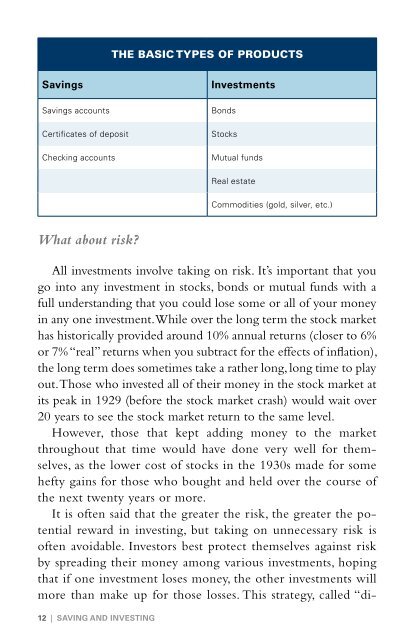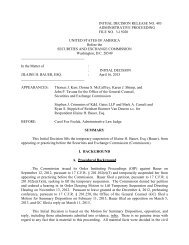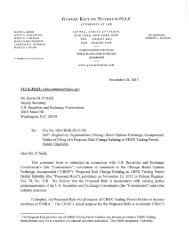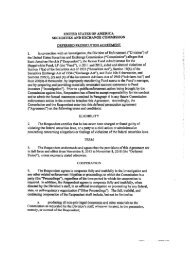Saving and Investing - Securities and Exchange Commission
Saving and Investing - Securities and Exchange Commission
Saving and Investing - Securities and Exchange Commission
Create successful ePaper yourself
Turn your PDF publications into a flip-book with our unique Google optimized e-Paper software.
12 | SAVING AND INVESTING<br />
THE BASIC TYPES OF PRODUCTS<br />
<strong>Saving</strong>s Investments<br />
<strong>Saving</strong>s accounts Bonds<br />
Certificates of deposit Stocks<br />
Checking accounts Mutual funds<br />
What about risk?<br />
Real estate<br />
Commodities (gold, silver, etc.)<br />
All investments involve taking on risk. It’s important that you<br />
go into any investment in stocks, bonds or mutual funds with a<br />
full underst<strong>and</strong>ing that you could lose some or all of your money<br />
in any one investment. While over the long term the stock market<br />
has historically provided around 10% annual returns (closer to 6%<br />
or 7% “real” returns when you subtract for the effects of inflation),<br />
the long term does sometimes take a rather long, long time to play<br />
out. Those who invested all of their money in the stock market at<br />
its peak in 1929 (before the stock market crash) would wait over<br />
20 years to see the stock market return to the same level.<br />
However, those that kept adding money to the market<br />
throughout that time would have done very well for themselves,<br />
as the lower cost of stocks in the 1930s made for some<br />
hefty gains for those who bought <strong>and</strong> held over the course of<br />
the next twenty years or more.<br />
It is often said that the greater the risk, the greater the potential<br />
reward in investing, but taking on unnecessary risk is<br />
often avoidable. Investors best protect themselves against risk<br />
by spreading their money among various investments, hoping<br />
that if one investment loses money, the other investments will<br />
more than make up for those losses. This strategy, called “di-

















